Dr. Catherine Crockford
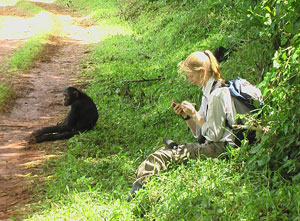
Independent Research Group Leader &
Director of Research, Head of Ape Social Mind Lab, Institute of Cognitive Sciences, CNRS, Lyon
Max Planck Institute for Evolutionary Anthropology
Department of Human Behavior, Ecology and Culture
Deutscher Platz 6
D-04103 Leipzig, Germany
phone: +49 341 3550 220
e-mail: crockfor@[>>> Please remove the text! <<<]eva.mpg.de
CV [PDF]
Research Interests
Together with Roman Wittig, I co-direct the Tai Chimpanzee Project, Tai National Park, Ivory Coast, which currently has three habituated chimpanzee groups with a fourth under habituation, as well as one habituated sooty mangabey group. This is a dynamic group encompassing topics ranging from behavioural ecology and conservation to psychology and health and disease.
Together with my research group, I investigate questions related to the evolution of sociality, social cognition, communication and the brain. I examine these from a) comparative and b) developmental perspectives addressing questions of a) sociality, health and fitness; b) maternal effects on the development of sociality, cognition and communication; c) species and individual variation in communication and cognition and correlated neural correlates. I use long-term data sets of behavioural observations, non-invasive hormone sampling and field experiments to address these questions in chimpanzees and other wild primates, including bonobos, baboons and sooty mangabeys. In terms of the evolution of sociality, we examine underlying physiological and cognitive mechanisms that may explain links between stress, social bonds and cooperation, between non-kin as well as kin.
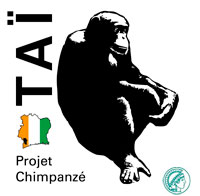
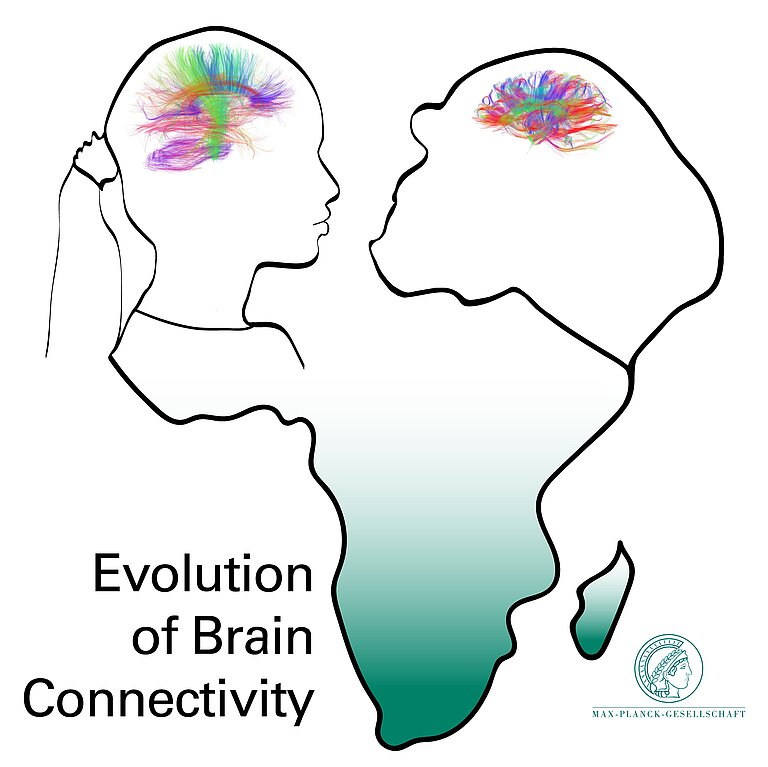

ERC project: The influence of early life experience on later social skills in chimpanzee
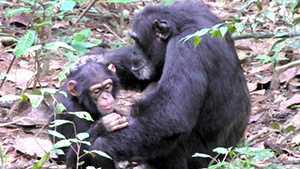
Social bonding success in life impacts on health, survival and fitness. It is proposed that early and later social experience as well as heritable factors determine social bonding abilities in adulthood, although the relative influence of each is unclear. In humans, the resulting uncertainty likely impedes psychological and psychiatric assessment and therapy. One problem hampering progress for human studies is that social bonding success is hard to objectively quantify, particularly in adults. I propose to directly address this problem by determining the key influences on social bonding abilities in chimpanzees, our closest living relative, where social bonding success can be objectively quantified, and variation in underlying hormonal and cognitive mechanisms can be examined.
We assimilate behavioural, non-invasively sampled hormonal and genetic data from five wild chimpanzee communities across two subspecies with the aim to assess the impact mothers have on offspring development and on their offspring’s future adult life, for example we test the impact of post-weaning maternal loss on offspring behaviour, hormones and reproductive success.
Funding







Current Lab Members
Post doctoral Researchers
- Dr. Cedric Gerard-Buttoz: Primate vocal complexity - in collaboration with the Evolution of Brain Connectivity Project
- Dr. Patrick Tkaczynski: Maternal influence on offspring sociality and underlying hormones.
- Sylvain Lemoine: Intergroup spacing and relationships between four neighbouring
chimpanzee communities.
PhD Students
- Tatiana Bortolato: Development of chimpanzee vocal sequences.
- Clement Gba: Food competition in male and female mangabeys.
- Mathieu Malherbe: Tool use variation across communities.
- Mathilde Grampp: Social complexity & Behaviour in Mangabeys & Chimpanzees.
- Virgile Manin: Sociality, hormones and health, together with SoHapi.
- Prince Valé: Energy consumption and usage in wild chimpanzees.
- Oscar Node-Langlois: Maternal care and the development of and affiliative interactions and the oxytocinergic system in chimpanzees.
- Eleonore Rolland: Influence of mothering style on offspring attachment.
- Veterinary Staff: Tobias Graessle, Jenny Jaffe, Jorge Gomez Fortun.
Alumni:
- Post docs, Isaac Schamberg, Pawel Fedurek, Ruth Sonnweber, Natali Uomini, Aisha Bruendl, Kathrin Kopp.
- PhDs: Alex Mielke, Liran Samuni, Anna Preis, Sylvain Lemoine.
Current collaborations
- Alfred Anwander, Neuropyschology Dept, MPI Human Cognitive & Brain Sciences, Leipzig
- Jacinta Beehner, University of Michigan, Ann Arbor, USA
- Thore Bergman, University of Michigan, Ann Arbor, USA
- Tobias Deschner, Head of Field Endocrinology Laboratory, primatology department, MPI EVA.
- Claudia Fichtel, German Primate Center, Göttingen, Germany.
- Angela Friederici, Director of Neuropyschology Dept, MPI Human Cognitive & Brain Sciences, Leipzig
- Daniel Haun, Director Leipzig Research Center for Child Development, University of Leipzig.
- Esther Herrmann, Group leader, Psychology Department, MPI EVA.
- Gottfried Hohmann, Director of Lui Khotale Bonobo Field Site, Congo, and Group leader, primatology department, MPI EVA.
- Sven Grawunder, Keele University.
- Philipp Gunz, Human Evolution Dept, MPI EVA, Leipzig
- Peter Kappeler, German Primate Center, Göttingen, Germany.
- Lydia Lunz, Oxford University, Oxford, UK
- Alex Mielke, Oxford University, Oxford, UK
- Markus Morawski, Paul Flechsig Institute of Brain Research, Leipzig.
- Kevin Langergraber, Anthropology Department, Arizona State University.
- Fabian Leendertz, Group leader, Epidemiology of highly infectious diseases, Robert Koch Institute, Berlin.
- Richard McElreath, Director of Human Behavioural Ecology Department, MPI EVA.
- Julia Ostner, German Primate Center, Göttingen, Germany.
- Liran Samuni, Harvard University, Boston, USA
- Oliver Schülke, German Primate Center, Göttingen, Germany.
- Steve Smith, Konrad Lorenz Institute for Ethology, University of veterinary medicine, Vienna.
- Martin Surbeck, Harvard University, Boston, USA.
- Linda Vigilant, Group leader, Molecular Genetics Lab, primatology department, MPI EVA.
- Nik Weiskopf, Director of Neurophysics Dept, MPI Human Cognitive & Brain Sciences, Leipzig
- Klaus Zuberbühler, Biology Department, University of Neuchatel.
Press
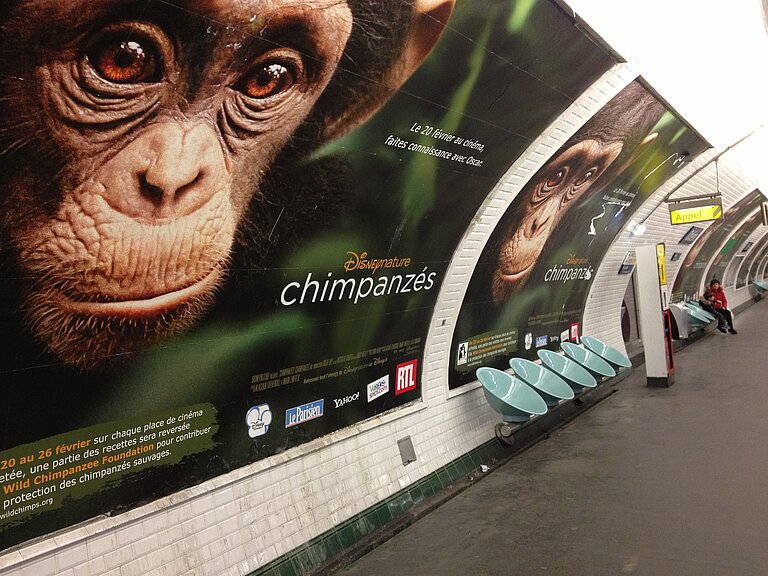
Press review on publications
[link]
Taï Chimpanzee Projects News on twitter
[link]
Nature Communications has published: Wittig, R.M., Crockford, C. et al. "Social support reduces stress hormone levels in wild chimpanzees across stressful events and everyday affiliations"
Supplementary Video
Scientific Commentary
Nature, 18 September 2014: Animal Behaviour: The evolutionary roots of lethal aggression. Commentary by Joan B. Silk (PDF)
Nature, 17 April 2014: Evolutionary Biology: Dating chimpanzees. Commentary by M. Haslam (PDF)
Current Biology, 24 January 2012: Animal Cognition: Chimpanzee alarm calls depend on what others know. Commentary by Robert M. Seyfarth & Dorothy L. Cheney (PDF)
Current Biology, 10 August 2010: Primatology: “A faithful friend is the medicine of life”. Commentray by Susan C. Alberts (PDF)
Press Review of Specific Papers
Vocalizing in chimpanzees is influenced by social-cognitive processes. Science Advances, 3(11): e1701742. November 2017
Nature (link), Scientific American (link), Newsweek (link), New York Times (link), LA times (link), The Verge (link)
Social support reduces stress hormone levels in wild chimpanzees across stressful events and everyday affiliations'. Nature Communications 7, 13361
New Scientist(link), Newsweek (link), LA Times (link), Mail Online (link)
Lethal aggression in Pan is better explained by adaptive strategies than human impacts. Nature, 2014. 17 Sep 2014: Die Welt (PDF). 18 Sep 2014: AAAS News (PDF), New York Times (PDF), BBC News (PDF).
Triadic social interactions operate across time: a field experiment with wild chimpanzees. Proceedings of the Royal Society London B, 2014. 6 Jan 2014: SCINEXX (PDF), Weser Kurier (PDF)
Food sharing is linked to urinary oxytocin levels and bonding in related and unrelated wild chimpanzees. Proceedings of the Royal Society London B, 2014. 15 Jan 2014: Washington Post (PDF), Daily Mail (PDF), Tagesspiegel (PDF), Die Welt (PDF).
Urinary oxytocin and social bonding in related and unrelated wild chimpanzees. Proceedings of the Royal Society London B, 2013. 23 Jan 13: BBC Nature (PDF), Der Spiegel (PDF), 25 Jan 13: Leipziger Volkszeitung (PDF)
Wild chimpanzees inform ignorant group members of danger. Current Biology, 2012.
29 Dec 11: BBC Nature (PDF), The Guardian (PDF), Wiener Zeitung (PDF); 30 Dec 11: Bild der Wissenschaft (PDF), Hamburger Abendblatt (PDF), Süddeutsche Zeitung (PDF), USA Today (PDF); 4 Jan 12: Neue Züricher Zeitung (PDF)
The benefit of social capital: Close social bonds among female baboons enhance offspring survival. Proceedings of the Royal Society B, 2009.
10 July 09 The Guardian (PDF)
Publications
* joint first author
ǂ joint senior author
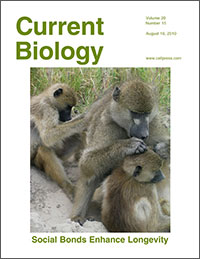
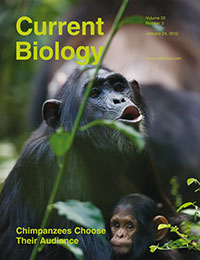
2025
Becker, Y., Eichner, C., Paquette, M., Bock, C., Girard-Buttoz, C., Jäger, C., Gräßle, T., Deschner, T., Amarasekaran, B., Asiimwe, C., Aschoff, D., Bleyer, M., Chantrey, J., Fedurek, P., Flores, K., Gone Bi, Z. B., Jaffe, J. E., Hambrech, S., Hanus, D., Haun, D., Kirilina, E., Kopp, K., Leendertz, F. H., Liptovszky, M., Makouloutou-Nzassi, P., Mätz-Rensing, K., McElreath, R., McLennan, M., Mezö, Z., Moittié, S., Møller, T., Morawski, M., Olofsson-Sannö, K., Pika, S., Pizarro, A., Pléh, K., Rendel, J., Forero, A. R., Steiner, J., Stidworthy, M. F., Southern, L., Szentiks, C. A., Tanga, T., Ulrich, R., Unwin, S., Walker, S., Weiskopf, N., Wibbelt, G., Wood, K., Zuberbühler, K., Gunz, P., Wittig, R. M., Crockford, C., Friederici, A. D., Anwander, A., & EBC Consortium (2025). Long arcuate fascicle in wild and captive chimpanzees as a potential structural precursor of the language network. Nature Communications, 16: 4485. |
|
Rolland, E., Nodé-Langlois, O., Tkaczynski, P. J., Girard-Buttoz, C., Rayson, H., Crockford, C., & Wittig, R. M. (2025). Evidence of organized but not disorganized attachment in wild Western chimpanzee offspring (Pan troglodytes verus) (advance online). Nature Human Behaviour, e2017144118. |
|
Eleuteri, V., van der Werff, J., Wilhelm, W., Soldati, A., Crockford, C., Desai, N., Fedurek, P., Fitzgerald, M., Graham, K. E., Koops, K., Pruetz, J., Samuni, L., Slocombe, K., Stoeger, A., Wilson, M. L., Wittig, R. M., Zuberbühler, K., Camara, H. D., Mamy, G., Ravignani, A., & Hobaiter, C. (2025). Chimpanzee drumming shows rhythmicity and subspecies variation. Current Biology, 35(10), 2448-2456.e4. |
|
Fedurek, P., Girard-Buttoz, C., Tkaczynski, P. J., Hobaiter, C., Zuberbühler, K., Wittig, R. M., & Crockford, C. (2025). Maternal gregariousness and female audience effects mediate mother–infant proximity in wild chimpanzees. Applied Animal Behaviour Science, 223: 123156. |
|
Fournier, F., Perrier, L., Girard-Buttoz, C., Keenan, S., Bortolato, T., Wittig, R. M., Crockford, C., & Levrero, F. (2025). Emotions mediate nonlinear phenomena production in the vocalizations of two ape species. Philosophical Transactions of the Royal Society B: Biological Sciences, 380(1923): 20240013. |
|
Sigmundson, R., Girard-Buttoz, C., Le Floch, A., Azaiez, T. S., McElreath, R., Zuberbühler, K., Wittig, R. M., & Crockford, C. (2025). Vocal sequence diversity and length remain stable across ontogeny in a catarrhine monkey (Cercocebus atys). Communications Biology, 8: 465. |
|
Malherbe, M., Kpazahi, H. N., Kone, I., Samuni, L., Crockford, C., & Wittig, R. M. (2025). Signal traditions and cultural loss in chimpanzees. Current Biology, 35(3), R87-R88. |
|
Girard-Buttoz, C., Neumann, C., Bortolato, T., Zaccarella, E., Friederici, A. D., Wittig, R. M., & Crockford, C. (2025). Versatile use of chimpanzee call combinations promotes meaning expansion. Science Advances, 11(19): eadq2879. |
|
Nodé-Langlois, O., Rolland, E., Girard-Buttoz, C., Samuni, L., Ferrari, P. F., Wittig, R. M., & Crockford, C. (2025). Social tolerance and role model diversity increase tool use learning opportunities across chimpanzee ontogeny. Communications Biology, 8: 509. Retrieved from https://doi.org/10.1038/s42003-025-07885-4. |
2024
Crockford, C., Arandjelovic, M., Deschner, T., Gone Bi, Z. B., Herbinger, I., Kalan, A., Kühl, H., Leendertz, F. H., Luncz, L. V., Normand, E., & Wittig, R. M. (2024). Christophe Boesch (1951–2024): Primatology pioneer with a long-term vision for research and conservation. International Journal of Primatology, 45(4), 721-725. |
|
Gkotsoulias, D. G., Jäger, C., Müller, R., Gräßle, T., Olofsson, K. M., Møller, T., Unwin, S., Crockford, C., Wittig, R. M., Bilgic, B., & Möller, H. E. (2024). Chaos and COSMOS—Considerations on QSM methods with multiple and single orientations and effects from local anisotropy. Magnetic Resonance Imaging, 110, 104-111. |
|
Eichner, C., Paquette, M., Müller-Axt, C., Bock, C., Budinger, E., Gräßle, T., Jäger, C., Kirilina, E., Lipp, I., Møller, T., Olofsson-Sannö, K., Morawski, M., Rusch, H., Wenk, P., Weiskopf, N., Wittig, R. M., Crockford, C., Friederici, A. D., & Anwander, A. (2024). Detailed mapping of the complex fiber structure and white matter pathways of the chimpanzee brain. Nature Methods, 21(6), 1122-1130. |
|
Fedurek, P., Asiimwe, C., Rice, G. K., Akankwasa, W. J., Reynolds, V., Hobaiter, C., Kityo, R., Muhanguzi, G., Zuberbühler, K., Crockford, C., Cer, R. Z., Bennett, A. J., Rothman, J. M., Bishop-Lilly, K. A., & Goldberg, T. L. (2024). Selective deforestation and exposure of African wildlife to bat-borne viruses. Communications Biology, 7: 470. |
2023
Tkaczynski, P. J., Mafessoni, F., Girard-Buttoz, C., Samuni, L., Ackermann, C. Y., Fedurek, P., Gomes, C., Hobaiter, C., Löhrich, T., Manin, V., Preis, A., Valé, P. D., Wessling, E. G., Wittiger, L., Zommers, Z., Zuberbuehler, K., Vigilant, L., Deschner, T., Wittig, R. M., & Crockford, C. (2023). Shared community effects and the non-genetic maternal environment shape cortisol levels in wild chimpanzees. Communications Biology, 6(1): 565. |
|
Grampp, M., Samuni, L., Girard-Buttoz, C., León, J., Zuberbühler, K., Tkaczynski, P., Wittig, R. M., & Crockford, C. (2023). Social uncertainty promotes signal complexity during approaches in wild chimpanzees (Pan troglodytes verus) and mangabeys (Cercocebus atys atys). Royal Society Open Science, 10(11): 231073. |
|
Bortolato, T., Friederici, A. D., Girard-Buttoz, C., Wittig, R. M., & Crockford, C. (2023). Chimpanzees show the capacity to communicate about concomitant daily life events. iScience, 26(11): 108090. |
|
Gräßle, T., Crockford, C., Eichner, C., Girard-Buttoz, C., Jäger, C., Kirilina, E., Lipp, I., Düx, A., Edwards, L., Jauch, A., Kopp, K. S., Paquette, M., Pine, K., EBC Consortium, Haun, D. B. M., McElreath, R., Anwander, A., Gunz, P., Morawski, M., Friederici, A. D., Weiskopf, N., Leendertz, F. H., & Wittig, R. M. (2023). Sourcing high tissue quality brains from deceased wild primates with known socio‐ecology. Methods in Ecology and Evolution, 14(8), 1906 -1924. |
|
Bortolato, T., Mundry, R., Wittig, R. M., Girard-Buttoz, C., & Crockford, C. (2023). Slow development of vocal sequences through ontogeny in wild chimpanzees (Pan troglodytes verus). Developmental Science. |
|
Gkotsoulias, D. G., Müller, R., Jäger, C., Schlumm, T., Mildner, T., Eichner, C., Pampel, A., Jaffe, J. E., Gräßle, T., Alsleben, N., Chen, J., Crockford, C., Wittig, R. M., Liu, C., & Möller, H. E. (2023). High angular resolution susceptibility imaging and estimation of fiber orientation distribution functions in primate brain. NeuroImage, 276: 120202. |
|
Friederici, A. D., Wittig, R. M., Anwander, A., Eichner, C., Gräßle, T., Jäger, C., Kirilina, E., Lipp, I., Düx, A., Edwards, L. J., Girard-Buttoz, C., Jauch, A., Kopp, K. S., Paquette, M., Pine, K. J., Unwin, S., Haun, D. B. M., Leendertz, F. H., McElreath, R., Morawski, M., Gunz, P., Weiskopf, N., Crockford, C., & Consortium, E. (2023). Brain structure and function: a multidisciplinary pipeline to study hominoid brain evolution. Frontiers in Integrative Neuroscience, 17: 1299087. |
|
Lemoine, S., Samuni, L., Crockford, C., & Wittig, R. M. (2023). Chimpanzees make tactical use of high elevation in territorial contexts. PLoS Biology, 21(11): e3002350. |
2022
Bründl, A. C., Girard-Buttoz, C., Bortolato, T., Samuni, L., Grampp, M., Löhrich, T., Tkaczynski, P. J., Wittig, R. M., & Crockford, C. (2022). Maternal effects on the development of vocal communication in wild chimpanzees. iScience, 25(10): 105152. |
|
Ellis, S., Johnstone, R. A., Cant, M. A., Franks, D. W., Weiss, M. N., Alberts, S. C., Balcomb, K. C., Benton, C. H., Brent, L. J. N., Crockford, C., Davidian, E., Delahay, R. J., Ellifrit, D. K., Höner, O. P., Meniri, M., McDonald, R. A., Nichols, H. J., Thompson, F. J., Vigilant, L., Wittig, R. M., & Croft, D. P. (2022). Patterns and consequences of age-linked change in local relatedness in animal societies. Nature Ecology & Evolution. |
|
Girard-Buttoz, C., Bortolato, T., Laporte, M., Grampp, M., Zuberbühler, K., Wittig, R. M., & Crockford, C. (2022). Population-specific call order in chimpanzee greeting vocal sequences. iScience, 25(9): 104851. |
|
León, J., Thiriau, C., Bodin, C., Crockford, C., & Zuberbühler, K. (2022). Acquisition of predator knowledge from alarm calls via one-trial social learning in monkeys. iScience, 25(9): 104853. |
|
Leroux, M., Monday, G., Chandia, B., Akankwasa, J. W., Zuberbühler, K., Hobaiter, C., Crockford, C., Townsend, S. W., Asiimwe, C., & Fedurek, P. (2022). First observation of a chimpanzee with albinism in the wild: Social interactions and subsequent infanticide. American Journal of Primatology, 84(6): e23305. |
|
Girard-Buttoz, C., Zaccarella, E., Bortolato, T., Friederici, A. D., Wittig, R. M., & Crockford, C. (2022). Chimpanzees produce diverse vocal sequences with ordered and recombinatorial properties. Communications Biology, 5: 410. |
|
Schülke, O., Anzà, S., Crockford, C., De Moor, D., Deschner, T., Fichtel, C., Gogarten, J. F., Kappeler, P. M., Manin, V., Müller-Klein, N., Prox, L., Sadoughi, B., Touitou, S., Wittig, R. M., & Ostner, J. (2022). Quantifying within-group variation in sociality—covariation among metrics and patterns across primate groups and species. Behavioral Ecology and Sociobiology, 76: 50. |
|
Fedurek, P., Akankwasa, J. W., Danel, D. P., Fensome, S., Zuberbühler, K., Muhanguzi, G., Crockford, C., & Asiimwe, C. (2022). The effect of warning signs on the presence of snare traps in a Ugandan rainforest. Biotropica, 54(3), 721-728. |
|
Grawunder, S., Uomini, N., Samuni, L., Bortolato, T., Girard-Buttoz, C., Wittig, R. M., & Crockford, C. (2022). Chimpanzee vowel-like sounds and voice quality suggest formant space expansion through the hominoid lineage. Philosophical Transactions of the Royal Society of London, Series B: Biological Sciences, 377(1841): 20200455. |
|
Bründl, A. C., Tkaczynski, P. J., Kohou, G. N., Boesch, C., Wittig, R. M., & Crockford, C. (2022). Response to the commentary ‘Becoming uniquely human? Comparing chimpanzee to human infancy’. Developmental Science, 25(1): e13143. |
|
Lemoine, S. R. T., Samuni, L., Crockford, C. ǂ., & Wittig, R. M. (2022). Parochial cooperation in wild chimpanzees: A model to explain the evolution of parochial altruism. Philosophical Transactions of the Royal Society B: Biological Sciences, 377(1851). |
|
Soldati, A., Fedurek, P., Crockford, C., Adue, S., Akankwasa, J. W., Asiimwe, C., Asua, J., Atayo, G., Chandia, B., Freymann, E., Fryns, C., Muhumuza, G., Taylor, D., Zuberbühler, K., & Hobaiter, C. (2022). Dead-infant carrying by chimpanzee mothers in the Budongo Forest. Primates, 63, 497-508. |
|
Tkaczynski, P. J., Mafessoni, F., Girard-Buttoz, C., Samuni, L., Ackermann, C. Y., Fedurek, P., Gomes, C., Hobaiter, C., Löhrich, T., Manin, V., Preis, A., Valé, P. D., Wessling, E. G., Wittiger, L., Zommers, Z., Zuberbuehler, K., Vigilant, L., Deschner, T., Wittig, R. M., & Crockford, C. (2022). Non-genetic maternal effects shape individual differences in cortisol phenotypes in wild chimpanzees. bioRxiv. |
2021
Surbeck, M., Girard-Buttoz, C., Samuni, L., Boesch, C., Fruth, B., Crockford, C., Wittig, R. M., & Hohmann, G. (2021). Attractiveness of female sexual signaling predicts differences in female grouping patterns between bonobos and chimpanzees. Communications Biology, 4: 1119. |
|
Kopp, K. S. *., Ebel, S. J. *., Wittig, R. M., Haun, D. B. M., & Crockford, C. (2021). Small mirrors do the trick: A simple, but effective method to study mirror self-recognition in chimpanzees. Animal Behavior and Cognition, 8(3), 391-404. |
|
Girard-Buttoz, C., Tkaczynski, P. J., Samuni, L., Fedurekt, P., Gomes, C. M., Löhrich, T., Manin, V., Preis, A., Valé, P. D., Deschner, T., Wittig, R. M., & Crockford, C. (2021). Early maternal loss leads to short but not long-term effects on diurnal cortisol slopes in wild chimpanzees. eLife, 10: e64134. |
|
Fedurek, P., Tkaczynski, P. J., Hobaiter, C., Zuberbühler, K., Wittig, R. M., & Crockford, C. (2021). The function of chimpanzee greeting calls is modulated by their acoustic variation. Animal Behaviour, 174, 279-289. |
|
Mielke, A., Preis, A., Samuni, L., Gogarten, J. F., Lester, J. D., Crockford, C., & Wittig, R. M. (2021). Consistency of social interactions in sooty mangabeys and chimpanzees. Frontiers in Ecology and Evolution, 8: 603677. |
|
Samuni, L., Crockford, C. ǂ., & Wittig, R. M. (2021). Group-level cooperation in chimpanzees is shaped by strong social ties. Nature Communications, 12: 539. |
|
Bründl, A. C., Tkaczynski, P. J., Kohou, G., Boesch, C., Wittig, R. M., & Crockford, C. (2021). Systematic mapping of developmental milestones in wild chimpanzees. Developmental Science, 24(1): e12988. |
|
Colchero, F., Aburto, J., Archie, E., Boesch, C., Breuer, T., Campos, F., Collins, A., Conde, D., Cords, M., Crockford, C., Thompson, M. E., Fedigan, L., Fichtel, C., Groenenberg, M., Hobaiter, C., Kappeler, P., Lawler, R., Lewis, R., Machanda, Z., Manguette, M., Muller, M., Packer, C., Parnell, R., Perry, S., Pusey, A., Robbins, M. M., Seyfarth, R., Silk, J., Staerk, J., Stoinski, T., Stokes, E., Strier, K., Strum, S., Tung, J., Villavicencio, F., Wittig, R. M., Wrangham, R., Zuberbühler, K., Vaupel, J., & Alberts, S. (2021). The long lives of primates and the ‘invariant rate of ageing’ hypothesis. Nature Communications, 12: 3666. |
|
Girard-Buttoz, C., Tkaczynski, P. J., Samuni, L., Fedurekt, P., Gomes, C., Löhrich, T., Manin, V., Preis, A., Valé, P. D., Deschner, T., Wittig, R. M., & Crockford, C. (2021). Early maternal loss affects diurnal cortisol slopes in immature but not mature wild chimpanzees. eLife, 10: e64134. |
|
Valé, P. D., Béné, J.-C.-K., N’Guessan, A. K., Crockford, C., Deschner, T., Koné, I., Girard-Buttoz, C., & Wittig, R. M. (2021). Energetic management in wild chimpanzees (Pan troglodytes verus) in Taï National Park, Côte d’Ivoire. Behavioral Ecology and Sociobiology, 75: 1. |
2020
Wittig, R. M., Mielke, A., Lester, J. D., & Crockford, C. (2020). Endurance and flexibility of close social relationships: Comparing chimpanzees (Pan troglodytes verus) and sooty mangabeys (Cercocebusatys atys). In L. M. Hopper, & S. R. Ross ( |
|
Eichner, C., Paquette, M., Mildner, T., Schlumm, T., Pleh, K., Crockford, C., Wittig, R. M., Möller, H. E., Friederici, A. D., & Anwender, A. (2020). lncreased sensitivity and signal-to-noise ratio in diffusion-weighted MRI using multi-echo acquisitions. NeuroImage, 221: 117172. |
|
Girard-Buttoz, C., Surbeck, M., Samuni, L., Boesch, C., Fruth, B., Crockford, C., Hohmann, G., & Wittig, R. M. (2020). Variable use of polyadic grooming and its effect on access to social partners in wild chimpanzees and bonobos. Animal Behavior, 168, 211-224. |
|
Crockford, C., Samuni, L., Vigilant, L., & Wittig, R. M. (2020). Postweaning maternal care increases male chimpanzee reproductive success. Science Advances, 6(38): eaaaz5746. |
|
Girard-Buttoz, C., Surbeck, M., Samuni, L., Tkaczynski, P. J., Boesch, C., Fruth, B., Wittig, R. M., Hohmann, G., & Crockford, C. (2020). Information transfer efficiency differs in wild chimpanzees and bonobos, but not social cognition. Proceedings of the Royal Society B: Biological Sciences, 287(1929): 20200877. |
|
Behringer, V., Preis, A., Wu, D., Crockford, C., Leendertz, S. A. J., Wittig, R. M., & Deschner, T. (2020). Urinary cortisol increases during a respiratory outbreak in wild chimpanzees. Frontiers in Veterinary Science, 7: 485. |
|
Tkaczynski, P. J., Mielke, A., Samuni, L., Preis, A., Wittig, R. M., & Crockford, C. (2020). Long-term repeatability in social behaviour suggests stable social phenotypes in wild chimpanzees. Royal Society Open Science, 7(8): 200454. |
|
Lemoine, S., Boesch, C., Preis, A., Samuni, L., Crockford, C. ǂ., & Wittig, R. M. (2020). Group dominance increases territory size and reduces neighbor pressure in wild chimpanzees. Royal Society Open Science, 7(5): 200577. |
|
Fedurek, P., Tkaczynski, P., Asiimwe, C., Hobaiter, C., Samuni, L., Lowe, A. E., Dijrian, A. G., Zuberbühler, K., Wittig, R. M., & Crockford, C. (2020). Maternal cannibalism in two populations of wild chimpanzees. Primates, 61, 181-187. |
|
Mielke, A., Crockford, C. ǂ., & Wittig, R. M. (2020). Predictability and variability of association patterns in sooty mangabeys. Behavioral Ecology and Sociobiology, 74: 46. |
|
Lemoine, S., Preis, A., Samuni, L., Boesch, C., Crockford, C. ǂ., & Wittig, R. M. (2020). Between-group competition impacts reproductive success in wild chimpanzees. Current Biology, 30(2), 312-318. |
|
Samuni, L., Tkaczynski, P. J., Deschner, T., Löhrrich, T., Wittig, R. M., & Crockford, C. (2020). Maternal effects on offspring growth indicate post-weaning juvenile dependence in chimpanzees (Pan troglodytes verus). Frontiers in Zoology, 17: 1. |
|
Girard-Buttoz, C., Surbeck, M., Samuni, L., Tkaczynski, P. J., Boesch, C., Fruth, B., Wittig, R. M., Hohmann, G., & Crockford, C. (2020). Chimpanzees outperform bonobos at an experimental cooperative task in the wild: Information transfer around a stationary danger. Folia Primatologica, 91(3), 255-256. |
|
Samuni, L., Mielke, A., Preis, A., Crockford, C. ǂ., & Wittig, R. M. (2020). Intergroup competition enhances chimpanzee (Pan troglodytes verus) in-group cohesion. International Journal of Primatology, 41, 342-362. |
|
Tkaczynski, P. J., Behringer, V., Ackermann, C., Fedrurek, P., Fruht, B., Girard-Buttoz, C., Hobaiter, C., Lee, S., Löhrich, T., Preis, A., Samuni, L., Zommers, Z., Zuberbühler, K., Deschner, T., Wittig, R. M., Hohmann, G., & Crockford, C. (2020). Patterns of urinary cortisol levels during ontogeny appear population- rather than species-specific in wild chimpanzees and bonobos. Journal of Human Evolution, 147: 102869. |
|
Tkaczynski, P. J., Samuni, L., Sonnweber, R., Deschner, T., Vigilant, L., Löhrrich, T., Wittig, R. M., & Crockford, C. (2020). Mum’s the word: The lasting impacts of maternal loss on offspring survival, growth and reproductive success in wild chimpanzees. Folia Primatologica, 91(3), 276-277. |
2019
Mielke, A., Crockford, C. *., & Wittig, R. M. (2019). Snake alarm calls as a public good in sooty mangabeys. Animal Behaviour, 158, 201-209. |
|
Surbeck, M., Boesch, C., Girard-Buttoz, C., Crockford, C., Hohmann, G., & Wittig, R. M. (2019). Erratum: Comparison of male conflict behavior in chimpanzees (Pan troglodytes) and bonobos (Pan paniscus), with specific regard to coalition and post-conflict behavior. American Journal of Primatology, 81(13): e23075. |
|
Crockford, C. (2019). Why does the chimpanzee vocal repertoire remain poorly understood? - and what can be done about it. In C. Boesch, & R. M. Wittig ( |
|
Lemoine, S., Crockford, C., & Wittig, R. M. (2019). Spatial integration of unusually high numbers of immigrant females into the south group further support for the bisexually-bonded model in Tai chimpanzees. In C. Boesch, & R. M. Wittig ( |
|
Mielke, A., Crockford, C., & Wittig, R. M. (2019). Rank changes in female chimpanzees in Tai National Park. In C. Boesch, & R. M. Wittig ( |
|
Preis, A., Samuni, L., Deschner, T., Crockford, C., & Wittig, R. M. (2019). Group specific social dynamics affect urinary ocytocin levels in Tai male chimpanzees. In C. Boesch, & R. M. Wittig ( |
|
Samuni, L., Wittig, R. M., & Crockford, C. (2019). Adoption in the Tai chimpanzees costs, benefits, and strong social relationships. In C. Boesch, & R. M. Wittig ( |
|
Dezecache, G., Crockford, C., & Zuberbühler, K. (2019). The development of communication in alarm contexts in wild chimpanzees. Behavioral Ecology and Sociobiology, 73(8): 104. |
|
Eichner, C., Kirilina, E., Paquette, M., Mildner, T., Schlumm, T., Pine, K., Müller-Axt, C., Lipp, I., Möller, H. E., Gallardo, G., Wittig, R. M., Crockford, C., Weiskopf, N., Friederici, A. D., & Anwander, A. (2019). Evolution of white matter connectivity and cortical myelination in hominoids: Wild chimpanzee pilot. In Proceedings of the 25th Annual Meeting of the Organization for Human Brain Mapping (OHBM). |
|
Samuni, L., Preis, A., Deschner, T., Wittig, R. M., & Crockford, C. (2019). Cortisol and oxytocin show independent activity during chimpanzee intergroup conflict. Psychoneuroendocrinology, 104, 165-173. |
|
Behringer, V., Stevens, J. M. G., Wittig, R. M., Crockford, C., Zuberbühler, K., Leendertz, F. H., & Deschner, T. (2019). Elevated neopterin levels in wild, healthy chimpanzees indicate constant investment in unspecific immune system. BMC Zoology, 4: 2. |
|
Surbeck, M., Boesch, C., Crockford, C., Thompson, M. E., Furuichi, T., Fruth, B., Hohmann, G., Ishizuka, S., Machanda, Z., Muller, M. N., Pusey, A., Sakamaki, T., Tokuyama, N., Walker, K., Wrangham, R., Wroblewski, E., Zuberbühler, K., Vigilant, L., & Langergraber, K. (2019). Males with a mother living in their group have higher paternity success in bonobos but not chimpanzees. Current Biology, 29(10), R354-R355. |
|
Preis, A., Samuni, L., Deschner, T., Crockford, C. ǂ., & Wittig, R. M. (2019). Urinary cortisol, aggression, dominance and competition in wild, West African male chimpanzees. Frontiers im Ecology and Evolution, 7: 107. |
|
Grawunder, S., Crockford, C., Kalan, A. K., Clay, Z., Stoessel, A., & Hohmann, G. (2019). Response to Garcia and Dunn: No evidence that maximum fundamental frequency reflects selection for signal diminution in bonobos Response. Current Biology, 29(15), R734-R735. |
2018
Schamberg, I., Wittig, R. M., & Crockford, C. (2018). Call type signals caller goal: A new take on ultimate and proximate influences in vocal production. Biological Reviews, 93(4), 2071-2082. |
|
Samuni, L., Preis, A., Mielke, A., Deschner, T., Wittig, R. M., & Crockford, C. (2018). Social bonds facilitate cooperative resource sharing in wild chimpanzees. Proceedings of the Royal Society London B, 285(1888): 20181643. |
|
Grawunder, S., Crockford, C., Clay, Z., Kalan, A. K., Stevens, J. M., Stoessel, A., & Hohmann, G. (2018). Higher fundamental frequency in bonobos is explained by larynx morphology. Current Biology, 28(20), R1188-R1189. |
|
Samuni, L., Preis, A., Deschner, T., Crockford, C. ǂ., & Wittig, R. M. (2018). Reward of labor coordination and hunting success in wild chimpanzees. Communications Biology, 1: 138. |
|
Preis, A., Samuni, L., Mielke, A., Deschner, T., Crockford, C. ǂ., & Wittig, R. M. (2018). Urinary oxytocin levels in relation to post-conflict affiliations in wild male chimpanzees (Pan troglodytes verus). Hormones and Behavior, 105, 28-40. |
|
Mielke, A., Preis, A., Samuni, L., Gogarten, J. F., Wittig, R. M., & Crockford, C. (2018). Flexible decision-making in grooming partner choice in sooty mangabeys and chimpanzees. Royal Society Open Science, 5(7): 172143. |
|
Sonnweber, R., Araya-Ajoy, Y. G., Behringer, V., Deschner, T., Tkaczynski, P. J., Fedurek, P., Preis, A., Samuni, L., Zommers, Z., Gomes, C., Zuberbühler, K., Wittig, R. M., & Crockford, C. (2018). Circadian rhythms of urinary cortisol levels vary between individuals in wild male chimpanzees: A reaction norm approach. Frontiers in Ecology and Evolution, 6: 85. |
|
Crockford, C., Gruber, T., & Zuberbühler, K. (2018). Chimpanzee quiet hoo variants differ according to context. Royal Society Open Science, 5(5): 172066. |
|
Crockford, C., Deschner, T., & Wittig, R. M. (2018). The role of oxytocin in social buffering: What do primate studies add? In R. Hurlemann, & V. Grinevich ( |
|
Lemoine, S., Boesch, C., Crockford, C., & Wittig, R. M. (2018). Effects of between-group competition on fitness in wild chimpanzees. In GFP 2019 Programme (pp. 28). |
|
Lemoine, S., Boesch, C., Crockford, C., & Wittig, R. M. (2018). Selective potential of between-group competition in wild chimpanzees. In N.N. |
|
Wittig, R. M., & Crockford, C. (2018). Chimpanzees: Investigating cognition in the wild. In Field and laboratory methods in animal cognition (pp. 115-145). Cambridge: Cambridge University Press. |
2017
Crockford, C., Wittig, R. M., & Zuberbühler, K. (2017). Vocalizing in chimpanzees is influenced by social-cognitive processes. Science Advances, 3(11): e1701742. |
|
Mielke, A., Samuni, L., Preis, A., Gogarten, J. F., Crockford, C. ǂ., & Wittig, R. M. (2017). Bystanders intervene to impede grooming in Western chimpanzees and sooty mangabeys. Royal Society Open Science, 4: 171296. |
|
Ackermann, C. Y., Neumann, C., Crockford, C., Deschner, T., Wittig, R. M., & Zuberbuehler, K. (2017). Variation in strength of juvenile-mother bonds and oxytocin in wild juvenile chimpanzees. Folia primatologica, 88(2), 176. |
|
Mielke, A., Gogarten, J. F., Preis, A., Samuni, L., Wittig, R. M., & Crockford, C. ǂ. (2017). Bystander effects on grooming interactions in Western Chimpanzees and Sooty Mangabeys. Folia primatologica, 88(2), 104-104. |
|
Samuni, L., Preis, A., Deschner, T., Crockford, C. ǂ., & Wittig, R. M. (2017). Neuroendocrine mechanisms of hunting and food sharing in wild chimpanzees. Folia primatologica, 88(2), 103-104. |
|
Surbeck, M., Boesch, C., Girard-Buttoz, C., Crockford, C., Hohmann, G., & Wittig, R. M. (2017). Comparison of male conflict behavior in chimpanzees (Pan troglodytes) and bonobos (Pan paniscus), with specific regard to coalition and post-conflict behavior. American Journal of Primatology, 79(6): e22641. |
|
Surbeck, M., Girard-Buttoz, C., Boesch, C., Crockford, C., Fruth, B., Hohmann, G., Langergraber, K., Zuberbühler, K., Wittig, R. M., & Mundry, R. (2017). Sex-specific association patterns in bonobos and chimpanzees reflect species differences in cooperation. Royal Society Open Science, 4: 161081. |
|
Ziegler, T., & Crockford, C. (2017). Neuroendocrine control in social relationships in non-human primates: Field based evidence. Hormones and Behavior, 91, 107-121. |
|
Samuni, L., Preis, A., Mundry, R., Deschner, T., Crockford, C. ǂ., & Wittig, R. M. (2017). Oxytocin reactivity during intergroup conflict in wild chimpanzees. Proceedings of the National Academy of Sciences of the United States of America, 114(2), 268-273. |
|
Grawunder, S., Uomini, N., & Crockford, C. (2017). Phonetische und korpus-linguistische Methoden bei der Analyse vokaler Kommunikation von freilebenden Schimpansen im Tai National Forest. In J. Trouvain ( |
2016
Wittig, R. M., Crockford, C. *., Weltring, A., Langergraber, K. E., Deschner, T., & Zuberbühler, K. (2016). Social support reduces stress hormone levels in wild chimpanzees across stressful events and everyday affiliations. Nature Communications, 7: 13361. |
|
Crockford, C. (2016). Aging: Lessons for elderly people from monkeys. Current Biology, 26(13), R532-R534. |
2015
Cronin, K. A., Pieper, B., van Leeuwen, E. J., Crockford, C. ǂ., & Haun, D. B. (2015). Cooperating to compete: Evaluating behavioral coordination in response to simulated territorial intrusion in chimpanzees (Pan Troglodytes). American Journal of Primatology, 77(S1), 64. |
|
Crockford, C., Wittig, R. M., & Zuberbühler, K. (2015). How intentional are chimpanzee vocalizations? Folia primatologica, 86(4), 264-265. |
|
Crockford, C., Wittig, R. M., & Zuberbühler, K. (2015). An intentional vocalization draws others’ attention: A playback experiment with wild chimpanzees. Animal Cognition, 18(3), 581-591. |
|
Wittig, R. M., Crockford, C. *., Weltring, A., Deschner, T., & Zuberbühler, K. (2015). Single aggressive interactions increase urinary glucocorticoid levels in wild male chimpanzees. PLoS One, 10(2): e0118695. |
|
Crockford, C. (2015). "Nonhuman primate communication, pragmatics, and the origins of language": Comment. Current Anthropology, 56(1), 67-67. |
|
Cheney, D. L., Crockford, C. *., Engh, A. L., Wittig, R. M., & Seyfarth, R. M. (2015). The costs of parental and mating effort for male baboons. Behavioral Ecology and Sociobiology, 69(2), 303-312. |
2014
Langergraber, K. E., Rowney, C., Schubert, G., Crockford, C., Hobaiter, C., Wittig, R. M., Wrangham, R. W., Zuberbühler, K., & Vigilant, L. (2014). How old are chimpanzee communities? Time to the most recent common ancestor of the Y-chromosome in highly patrilocal societies. Journal of Human Evolution, 69, 1-7. |
|
Wittig, R. M., Crockford, C. *., Langergraber, K. E., & Zuberbühler, K. (2014). Triadic social interactions operate across time: a field experiment with wild chimpanzees. Proceedings of the Royal Society of London. Series B: Biological Sciences (London), 281(1779): 20133155. |
|
Crockford, C., Deschner, T., Ziegler, T. E., & Wittig, R. M. (2014). Endogenous peripheral oxytocin measures can give insight into the dynamics of social relationships: A review. Frontiers in Behavioral Neuroscience, 8: 68. |
|
Langergraber, K. E., Rowney, C., Crockford, C., Wittig, R. M., Zuberbühler, K., & Vigilant, L. (2014). Genetic analyses suggest no immigration of adult females and their offspring into the Sonso community of chimpanzees in the Budongo Forest Reserve, Uganda. American Journal of Primatology, 640-648. |
|
Wittig, R. M., Crockford, C. *., Deschner, T., Langergraber, K. E., Ziegler, T. E., & Zuberbühler, K. (2014). Food sharing is linked to urinary oxytocin levels and bonding in related and unrelated wild chimpanzees. Proceedings of the Royal Society B: Biological Sciences, 281(1778): 20133096. |
2013
Crockford, C., Wittig, R. M., Langergraber, K., Ziegler, T. E., Zuberbühler, K., & Deschner, T. (2013). Urinary oxytocin and social bonding in related and unrelated wild chimpanzees. Proceedings of the Royal Society B: Biological Sciences, 280(1755): 20122765. |
|
Crockford, C., Wittig, R., & Zuberbühler, K. (2013). Chimpanzees distinguish acoustically similar alert hoos from resting hoos. Folia primatologica, 84(3-5), 291-292. |
2012
Langergraber, K., Pruefer, K., Rowney, C., Boesch, C., Crockford, C., Fawcett, K., Inoue, E., Inoue-Muruyama, M., Mitani, J. C., Muller, M. N., Robbins, M. M., Schubert, G., Stoinski, T. S., Viola, B., Watts, D., Wittig, R., Wrangham, R. W., Zuberbühler, K., Pääbo, S., & Vigilant, L. (2012). Generation times in wild chimpanzees and gorillas suggest earlier divergence times in great ape and human evolution. Proceedings of the National Academy of Sciences of the United States of America, 109(39), 15716-15721. |
|
Crockford, C., Wittig, R. M., Mundry, R., & Zuberbühler, K. (2012). Wild chimpanzees inform ignorant group members of danger. Current Biology, 22(2), 142-146. |
2010
Silk, J. B., Beehner, J. C., Bergman, T. J., Crockford, C., Engh, A. L., Moscovice, L. R., Wittig, R. M., Seyfarth, R. M., & Cheney, D. L. (2010). Female chacma baboons form strong, equitable, and enduring social bonds. Behavioral Ecology and Sociobiology, 54(11), 1733-1747. |
|
Silk, J. B., Beehner, J. C., Bergman, T. J., Crockford, C., Engh, A. L., Moscovice, L. R., Wittig, R. M., Seyfarth, R. M., & Cheney, D. L. (2010). Strong and consistent social bonds enhance the longevity of female baboons. Current Biology, 20(15), 1359-1361. |
|
Moscovice, L. R., Fiore, A. D., Crockford, C., Kitchen, D. M., Wittig, R. M., Seyfarth, R. M., & Cheney, D. L. (2010). Hedging their bets? Male and female chacma baboons form friendships based on likelihood of paternity. Animal Behaviour, 79(5), 1007-1015. |
2009
Silk, J. B., Beehner, J. C., Bergman, T. J., Crockford, C., Engh, A. L., Moscovice, L. R., Wittig, R. M., Seyfarth, R. M., & Cheney, D. L. (2009). The benefits of social capital: Close social bonds among female baboons enhance offspring survival. Proceedings of the Royal Society B: Biological Sciences, 276, 3099-3104. |
|
Kitchen, D., Cheney, D., Seyfarth, R., Beehner, J., Bergman, T., Crockford, C., Engh, A., Fischer, J., & Wittig, R. M. (2009). Costs and consequences of male aggression directed at female chacma baboons. In M. Muller, & R. Wrangham ( |
2008
Wittig, R. M., Crockford, C. *., Lehmann, J., Whiten, P. L., Seyfarth, R. M., & Cheney, D. L. (2008). Focused grooming networks and stress alleviation in wild female baboons. Hormones and Behavior, 54(1), 170-177. |
|
Boesch, C., Crockford, C. *., Herbinger, I., Wittig, R. M., Möbius, Y., & Normand, E. (2008). Intergroup conflicts among chimpanzees in Taï National Park: Lethal violence and the female perspective. American Journal of Primatology, 70(6), 519-532. |
|
Crockford, C., Wittig, R. M., Whiten, P., Seyfarth, R. M., & Cheney, D. L. (2008). Social stressors and coping mechanisms in wild female baboons (Papio hamadryas ursinus). Hormones and Behavior, 53(1), 254-265. |
2007
Wittig, R. M., Crockford, C. *., Wikberg, E., Seyfarth, R. M., & Cheney, D. L. (2007). Kin-mediated reconciliation substitutes for direct reconciliation in female baboons. Proceedings of the Royal Society B: Biological Sciences, 274, 1109-1115. |
|
Wittig, R. M., Crockford, C. *., Seyfarth, R. M., & Cheney, D. L. (2007). Vocal alliances in Chacma baboons (Papio hamadryas ursinus ). Behavioral Ecology and Sociobiology, 61(6), 899-909. |
|
Crockford, C., Wittig, R. M., Seyfarth, R. M., & Cheney, D. L. (2007). Baboons eavesdrop to deduce mating opportunities. Animal Behaviour, 73, 885-890. |
2005
Crockford, C., & Boesch, C. (2005). Call combinations in wild chimpanzees. Behaviour, 142(4), 397-421. |
2004
Crockford, C., Herbinger, I., Vigilant, L., & Boesch, C. (2004). Wild chimpanzees produce group-specific calls: A case for vocal learning? Ethology, 110(3), 221-243. |
|
Crockford, C. (2004). Vocal communication in West African wild chimpanzees (Pan troglodytes verus): Similarities and differences with humans. PhD Thesis, Univ., Leipzig. |
2003
Crockford, C., & Boesch, C. (2003). Context-specific calls in wild chimpanzees, Pan troglodytes verus: Analysis of barks. Animal Behaviour, 66(1), 115-125. |
2000
Crockford, C. (2000). Les chimpanzés du Parc National de Taï utilisent-ils des signaux référentiels ou symboliques? Sempérvira, 9, 41-44. |
1994
Crockford, C., & Lesser, R. (1994). Assessing functional communication in aphasia: Clinical utility and time demands of three methods. International Journal of Language & Communication Disorders, 29(2), 165-182. |
1992
Crockford C. & Lesser, R. (1992). Assessing functional communication in aphasia: clinical utility and time demands of three methods. European Journal of Communication Disorders. 29:165-182.
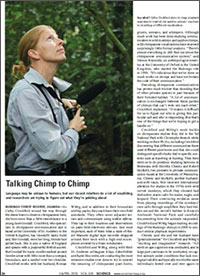
 Open Access
Open Access